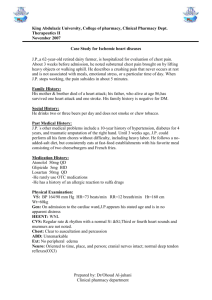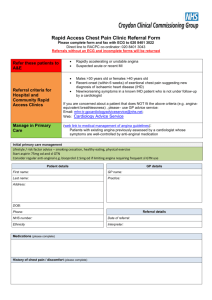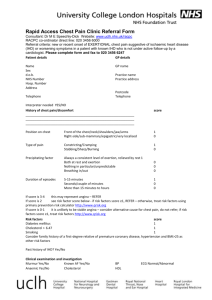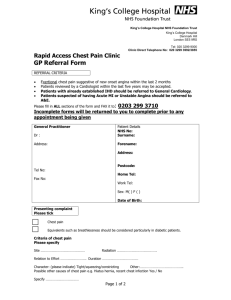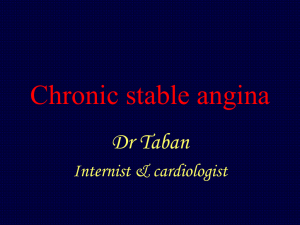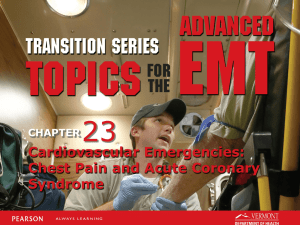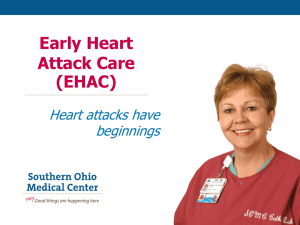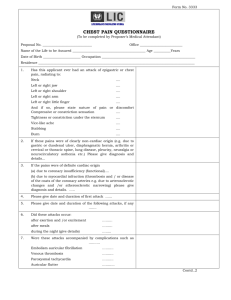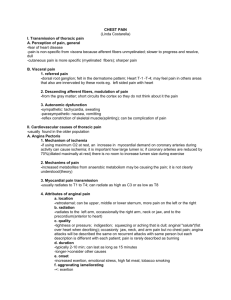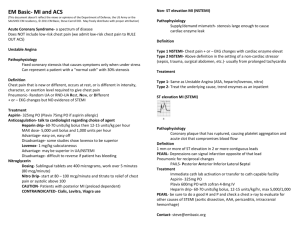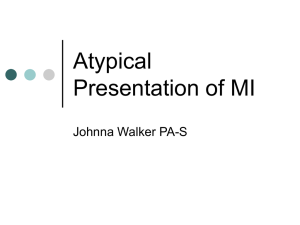Differential Diagnosis of Chest Pain (pulmonary unit + cardiac unit)
advertisement
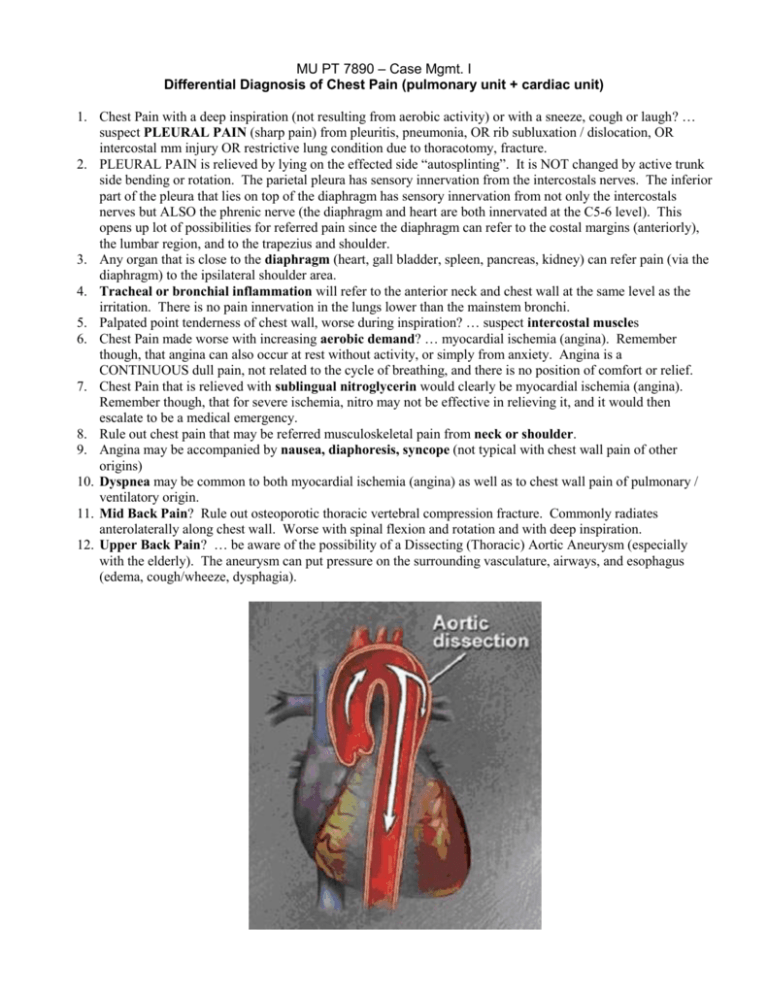
MU PT 7890 – Case Mgmt. I Differential Diagnosis of Chest Pain (pulmonary unit + cardiac unit) 1. Chest Pain with a deep inspiration (not resulting from aerobic activity) or with a sneeze, cough or laugh? … suspect PLEURAL PAIN (sharp pain) from pleuritis, pneumonia, OR rib subluxation / dislocation, OR intercostal mm injury OR restrictive lung condition due to thoracotomy, fracture. 2. PLEURAL PAIN is relieved by lying on the effected side “autosplinting”. It is NOT changed by active trunk side bending or rotation. The parietal pleura has sensory innervation from the intercostals nerves. The inferior part of the pleura that lies on top of the diaphragm has sensory innervation from not only the intercostals nerves but ALSO the phrenic nerve (the diaphragm and heart are both innervated at the C5-6 level). This opens up lot of possibilities for referred pain since the diaphragm can refer to the costal margins (anteriorly), the lumbar region, and to the trapezius and shoulder. 3. Any organ that is close to the diaphragm (heart, gall bladder, spleen, pancreas, kidney) can refer pain (via the diaphragm) to the ipsilateral shoulder area. 4. Tracheal or bronchial inflammation will refer to the anterior neck and chest wall at the same level as the irritation. There is no pain innervation in the lungs lower than the mainstem bronchi. 5. Palpated point tenderness of chest wall, worse during inspiration? … suspect intercostal muscles 6. Chest Pain made worse with increasing aerobic demand? … myocardial ischemia (angina). Remember though, that angina can also occur at rest without activity, or simply from anxiety. Angina is a CONTINUOUS dull pain, not related to the cycle of breathing, and there is no position of comfort or relief. 7. Chest Pain that is relieved with sublingual nitroglycerin would clearly be myocardial ischemia (angina). Remember though, that for severe ischemia, nitro may not be effective in relieving it, and it would then escalate to be a medical emergency. 8. Rule out chest pain that may be referred musculoskeletal pain from neck or shoulder. 9. Angina may be accompanied by nausea, diaphoresis, syncope (not typical with chest wall pain of other origins) 10. Dyspnea may be common to both myocardial ischemia (angina) as well as to chest wall pain of pulmonary / ventilatory origin. 11. Mid Back Pain? Rule out osteoporotic thoracic vertebral compression fracture. Commonly radiates anterolaterally along chest wall. Worse with spinal flexion and rotation and with deep inspiration. 12. Upper Back Pain? … be aware of the possibility of a Dissecting (Thoracic) Aortic Aneurysm (especially with the elderly). The aneurysm can put pressure on the surrounding vasculature, airways, and esophagus (edema, cough/wheeze, dysphagia).
